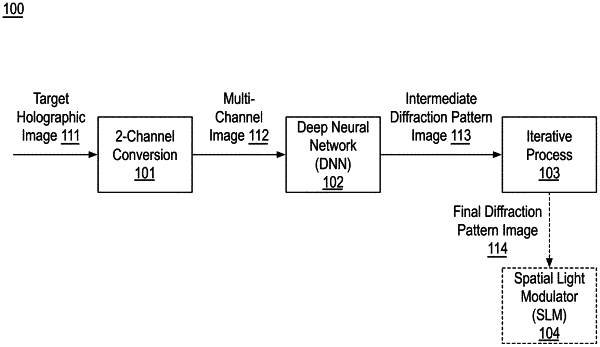| CPC G03H 1/0808 (2013.01) [G03H 1/2645 (2013.01); G06F 18/214 (2023.01); G06N 3/08 (2013.01); G06V 10/454 (2022.01); G06V 10/60 (2022.01); G06V 10/764 (2022.01); G06V 10/82 (2022.01); G03H 2001/266 (2013.01); G03H 2210/441 (2013.01); G03H 2210/46 (2013.01)] | 20 Claims |

|
1. A system, comprising:
a memory to store target holographic image data and multi-channel image data corresponding to the target holographic image data, the multi-channel image data having an amplitude component channel and a phase component channel; and
a processor coupled to the memory, the processor to:
apply a pre-trained deep neural network to the multi-channel image data to generate intermediate diffraction pattern image data corresponding to the target holographic image data; and
apply an iterative process using a propagation model to the intermediate diffraction pattern image data to generate final diffraction pattern image data, wherein the propagation model corresponds to a holographic imaging arrangement to generate a holographic image using diffraction pattern image data.
|